Mae Hong Son Landscapes, and a Mid-Range Zoom/Logitech K800 Illuminated Cordless Keyboard

|
• Gassan Khuntan Golf & Resort • Gassan Lake City Golf & Resort • Loei Palace Hotel • Phu Pha Nam Resort |
I have some unfortunate news to report on this project and total 100% transparency is how I feel this should be handled. My planned beneficiaries of this project, innocent very much in need children at a certain orphanage, have fallen victim to their local manager who we have found cannot currently be trusted and I doubt this is likely to change. Decisions need to be made if we're going to carry this project forward and if so who the new beneficiaries will be. I do expect this project to generate significant revenue so I take it very seriously. As you read this I'll be back in the Mae Sot area investigating further. I'll keep you informed. For now I'll still collect images with the intention of making the best most meaningful mosaics possible and as always, I'm asking for and will greatly appreciate your help with the images.
We are still accepting (and pleading for) images of children
from SEA. No matter how terrible you think they are, please send them in anyway. These images will be used to complete a set of 3 high quality mosaics which will be sold to benefit the Karen and Burmese Orphans living in the orphanages and refugee
camps. The more images the better, I can use all you have. Please take the time to go through your images for anything you think might help. If you missed the "No Place to Call Home" special, you can click on the link and read more about this. Thank you! info@BangkokImages.com
Quick Click Links
Feature Photograph
Mae Hong Son Landscapes, and a Mid-Range Zoom Logitech K800 Cordless Keyboard
Photography News of Interest
Readers Submissions
Readers Questions A Snapshot of Bangkok Images Week in Review
Infocus Blog, Driving While Thai!T
Feature Photograph *menu

Canon 5d Mark II, 24-70mm F2.8L USM @F8 1/200th 48mm ISO 100
Roughly 30-40 minutes outside Pai in the Mae Hong Son province I ran across this place and couldn't help but admire the view and the property. A nice 1.5 acre site perched on a cliff overlooking a spectacular vista. Sounds a bit commercial? As I walked around looking at this scene I couldn't help wondering how nice a modern home, pool, deck, and nice landscaping would fit in this location.
And then I imagined the area crammed with such homes and I realized this is exactly how so many wonderful forests and other like areas have been spoiled in the west. Someone with more money than the norm moves into the area, builds a wonderful home, and thousands follow.
Within a few decades the virgin vista which tempted you to build, is now pock marked with homes, decks, swimming pools, and the road is full of obnoxious drivers in fancy cars and the nice country stores which were such an attraction have turned into yuppie enclaves. And meanwhile, the original residents who lived there for hundreds of years have been forced out by high taxes and regulations imposed by the rich new residents.
I could be describing any one of thousands of such locations in my own country and I'm sure some in yours. We can't stop it, but I feel fortunate to have been there and enjoyed the area before it happens.
Mae Hong Son Landscapes, and a Mid-Range Zoom *menu
So far in our coverage of the Mae Hong Son province we’ve concentrated on The Road To Pai, Pai the town, and The Lisou Village. For me the best part of the trip comes in this modest installment, Mae Hong Son Landscapes, and a Mid-Range Zoom.
The Mae Hong Son province is in my opinion the most beautiful natural area of Thailand. If you haven’t visited the Mae Hong Son province then you really haven’t experienced the best Thailand has to offer. There is much to the area, from refugee camps along the Myanmar border, rainforests, mountain ranges, and several ethnic villages providing a unique insight into Thailand’s past and perhaps even its future.
It is also a photographer's paradise. You can’t travel a full kilometer without the urge to stop and make a capture. The challenge is in reducing these photo opportunities to a coherent and organized portfolio. It’s like finding a pirate's chest of gold and jewels and then choosing only the best pieces you can carry in your pockets. I spent the first few days not even taking pictures. I simply drove through the area admiring the terrain and its natural beauty and trying to avoid sensory overload. Stunningly beautiful, simply natural, and mostly untouched by modern man. You must see it for yourself. Follow along with me while I explain the circumstances of my favorite images.

Canon 5d Mark II, 24-70mm F2.8L USM @F8 1/200th 38mm ISO 100
This first image typifies the look and feel of my time in Mae Hong Son. Rolling green fields inset among mountains with the sun breaking through in streaks of illumination and color. The ever present storm clouds followed, above me, in front of me, and the sheets of rain (grey color you can spot on the hills) was like a moving wall of water. You could stand there feeling the rush of air move around you as the rain moved towards you and see with your eyes exactly where it was falling due to its density.
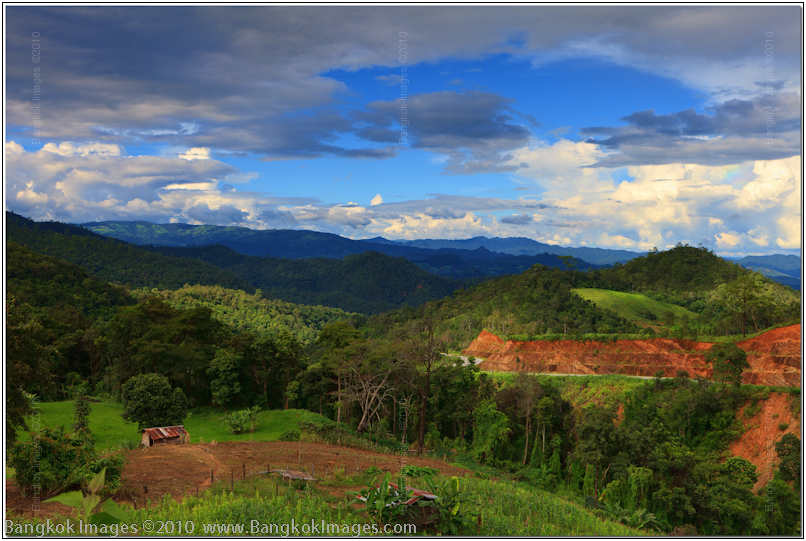
Canon 5d Mark II, 24-70mm F2.8L USM @F8 1/200th 42mm ISO 100
From atop one mountain you can see far across many others. Small valleys hold local farms and the roads twist and turn between landmarks. Many of the roadsides are terraced to accommodate excessive rainfall without creating mud slides. The low clouds feel as if they could almost touch the top of the mountain upon which you’re standing, and the blue of the sky is more intense than anywhere else I’ve experienced in SEA.
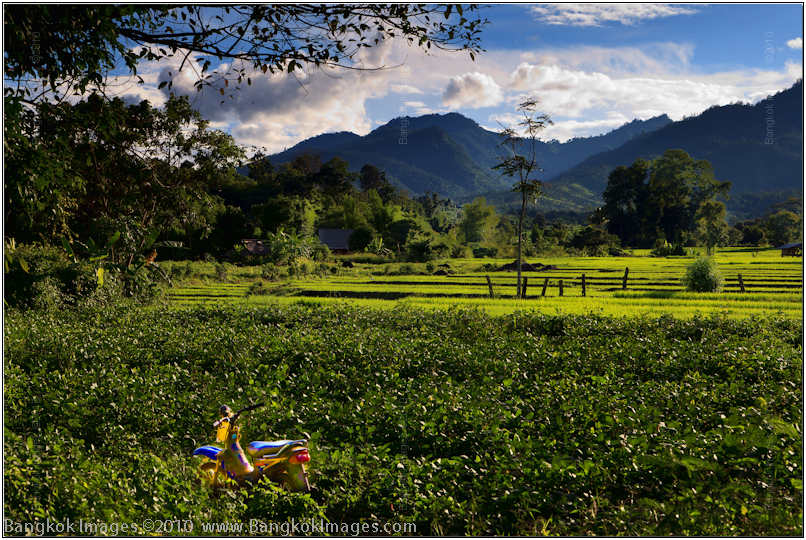
Canon 5d Mark II, 24-70mm F2.8L USM @F8 1/160th 70mm ISO 100
This small farm was occupying a valley between mountains where they grew rice, corn, and other seasonal crops. This is one of the few areas in Thailand where the crops are truly seasonal. The motorsai almost blends into the scene, but manages to provide interesting contrast.
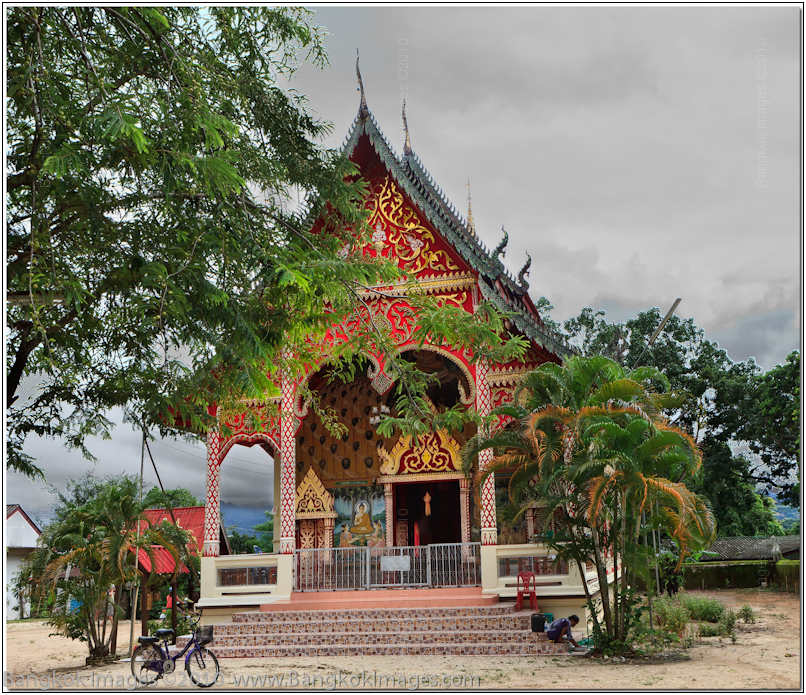
Canon 5d Mark II, 24-70mm F2.8L USM @F8 1/100th 28mm ISO 100
This temple complex was a surprise. All you see are mountains and natural vistas and not much in the way of towns or homes. Yet, here is a temple in great condition nestled among the hills and its being maintained by many locals. You ask yourself where they come from, there are no cars, only a few bicycles and motorsais, and no towns or visible houses. I’m guessing I missed so much, small roads I didn’t have time to explore probably led to small communities of farmers living in homes made largely of local materials from the forests.

Canon 5d Mark II, 24-70mm F2.8L USM @F8 1/500th 24mm ISO 100
From another day atop one of the tallest mountains this view was stunning. The vista extends hundreds of kilometers to the horizon, powerful storm clouds on top and all around us, and the different illumination levels makes for an almost 3d scene. The simple pagoda is on the road leading up to my location and is a nice place for travelers to stop and enjoy lunch.
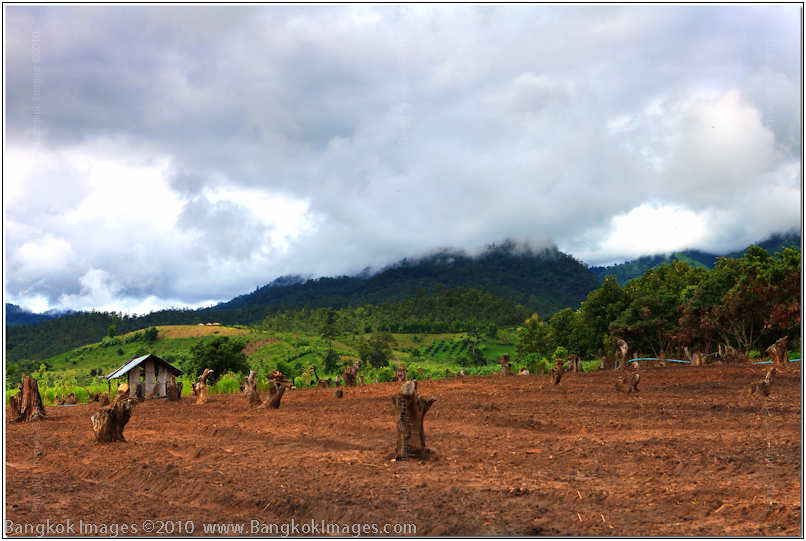
Canon 5d Mark II, 24-70mm F2.8L USM @F8 1/400th 59mm ISO 100
Inside one of the valleys, one of the many small farms. You can see where the trees were felled and the stumps remain. The land is cleared by burning and in years to come the stumps will fall to decay and be replaced by terraced rice fields. Beyond this new clearing you can see more of the existing farm.
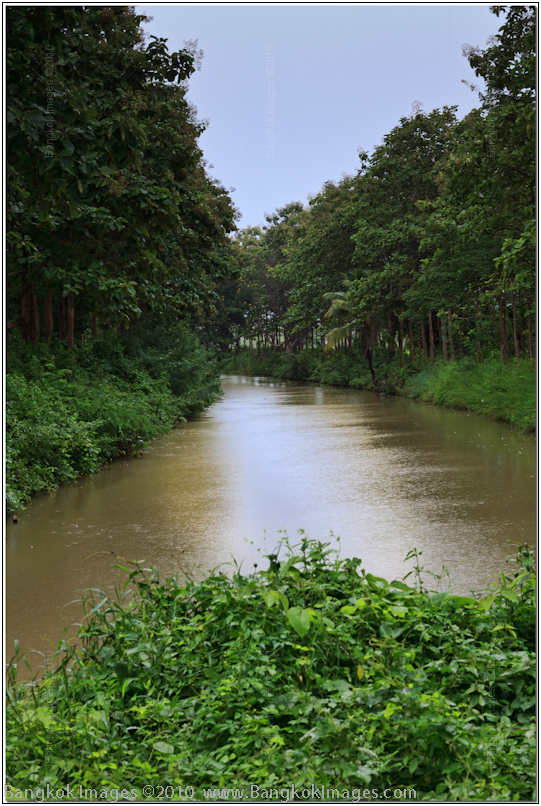
Canon 5d Mark II, 24-70mm F2.8L USM @F8 1/80th 54mm ISO 100
This is a manmade canal. My guess is it was built to funnel excess rain runoff and prevent flooding during the rainy season, and distribute irrigation water as needed during the growing season. I didn’t see any fishermen, but you can’t help but wonder if there’s such a thing as mountain trout and other fish similar to those we have back home.
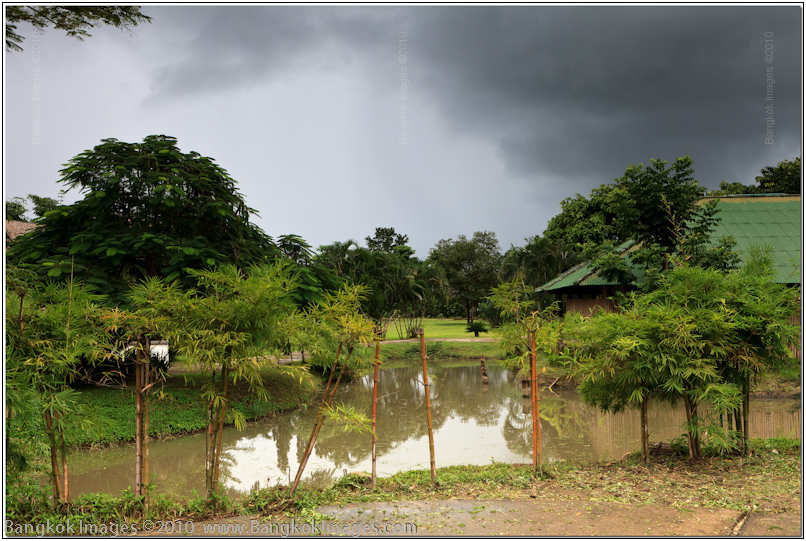
Canon 5d Mark II, 24-70mm F2.8L USM @F8 1/125th 34mm ISO 100
This farm has its own fish pond. You can see the green roofs to the right? Surprisingly most of the structures, colors of materials, and manmade landscaping compliment the land rather than distract from its natural state.
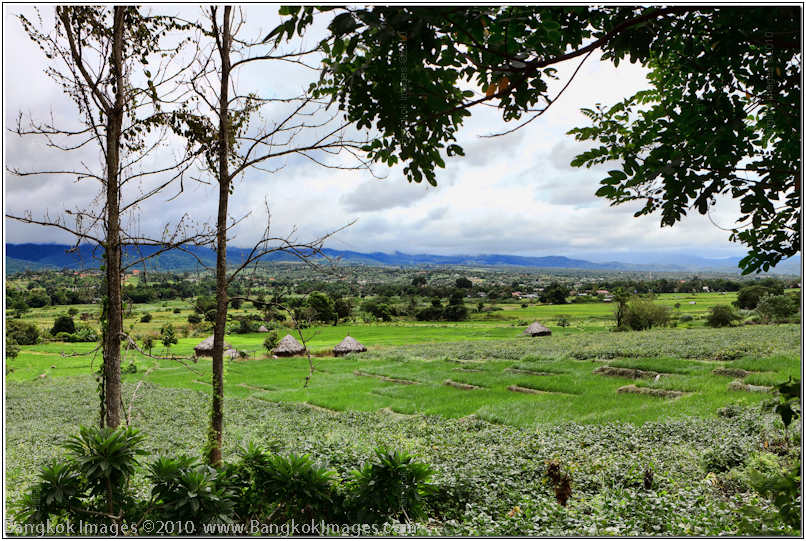
Canon 5d Mark II, 24-70mm F2.8L USM @F8 1/250th 35mm ISO 100
This capture was from above the Chinese Village looking over the commercial tourist areas used by both the Lisou and Chinese villages. Pai as I’ve described before is located in a large valley largely used for agricultural purposes. This is just a portion of the valley, so you should be able to get a idea of its size.
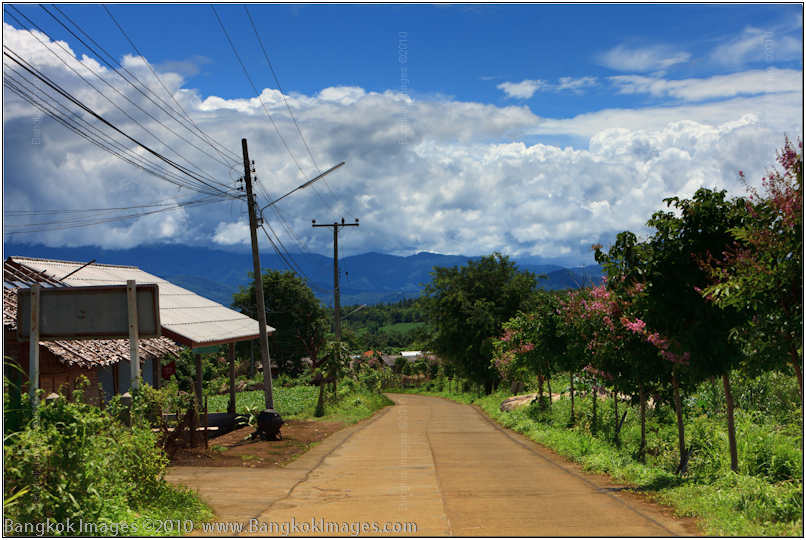
Canon 5d Mark II, 24-70mm F2.8L USM @F8 1/500th 70mm ISO 100
Even a routine street (Chinese Village) blends into its natural surroundings without the tacky buildings so common in other parts of Thailand. You really get the feeling the local residents truly appreciate their environment and make great sacrifices to maintain the original look and feel of their environment.
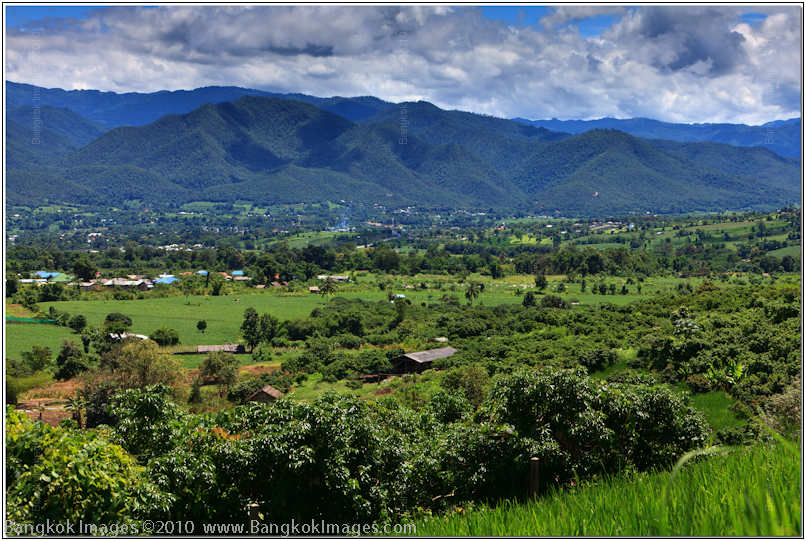
Canon 5d Mark II, 24-70mm F2.8L USM @F8 1/200th 70mm ISO 100
Another view from high up in the Chinese Village (I’ll show you the Chinese Village another time) which shows the greater Pai area. Pai, many farms, the commercial Lisou/Chinese villages, and many small farms occupy this landscape.
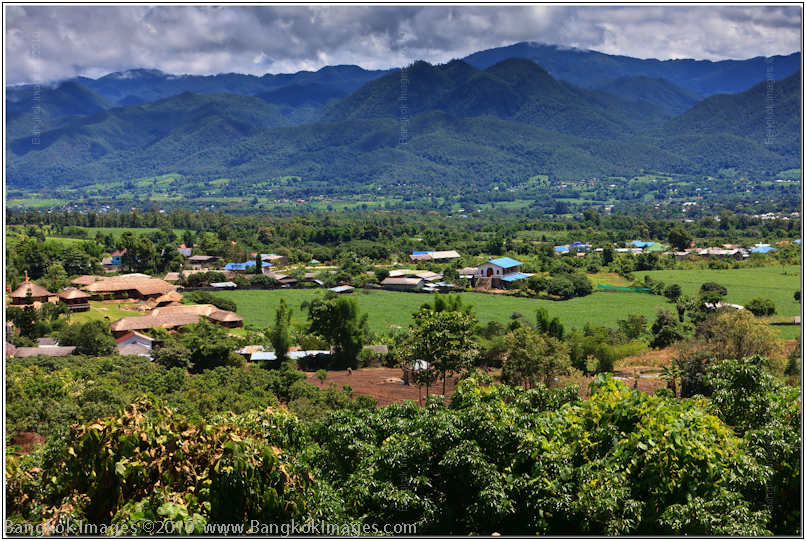
Canon 5d Mark II, 24-70mm F2.8L USM @F8 1/160th 70mm ISO 100
This unmolested landscape will take your breath away. If it wasn’t full the road to the right this would be the same scene you would have viewed thousands of years ago. Standing atop these mountains with storm clouds swirling and winds blowing and the cool temperatures providing comfort, you might start to question if this is really Thailand. Maybe this is the real Thailand.
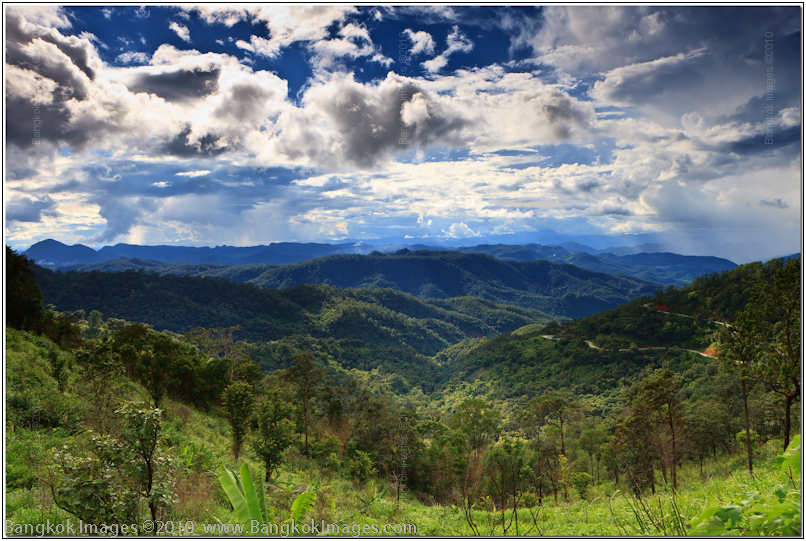
Canon 5d Mark II, 24-70mm F2.8L USM @F8 1/500th 24mm ISO 100
A more detailed picture from another angle from above the Chinese Village. Notice the large straw roofs to the left? This is the actual site of the commercial Lisou and Chinese villages where they’ll put on shows for the tourists and sell their wares. I wonder how many made it around the world and so far as these commercial areas in their quest to see the real Thailand, yet never left their tour bus crowd or bothered to venture into the nearby hills and experience the real villages these people live in?
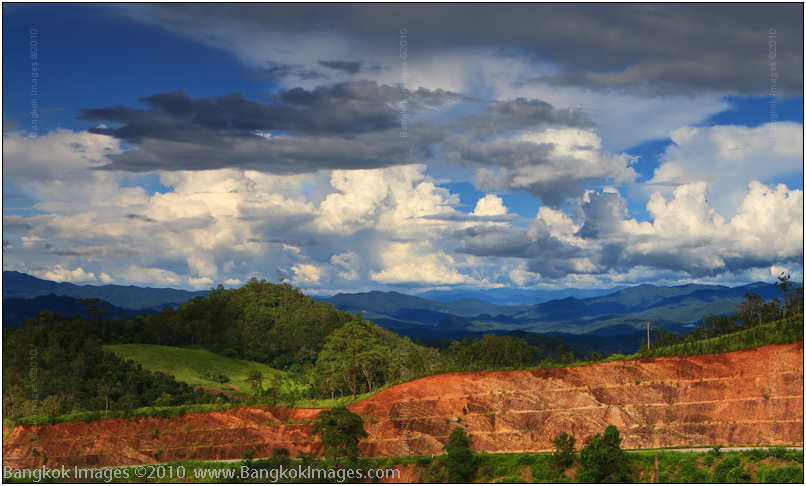
Canon 5d Mark II, 24-70mm F2.8L USM @F8 1/400th 34mm ISO 100
This is a closer look showing how they terrace the roadsides to accommodate rain runoff and prevent mudslides from closing the roads. Behind you can see mountains and clouds forever.
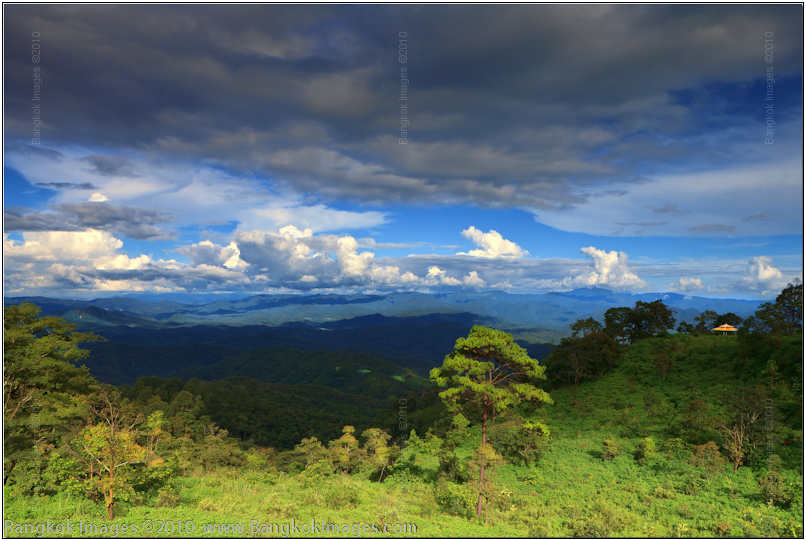
Canon 5d Mark II, 24-70mm F2.8L USM @F8 1/320th 25mm ISO 100
Another view of a vista outside of Pai. It’s a larger view of the one above, where now the pagoda is even smaller and you can’t see the road. Instead, you can actually feel the storm clouds right over where you’re standing as they push the air around you, and from somewhere behind a small break in the clouds allows the sun to light the foreground. As far as the eye can see, similar breaks in clouds illuminate swathes of rolling mountains, while other areas remain dark. A surreal experience.
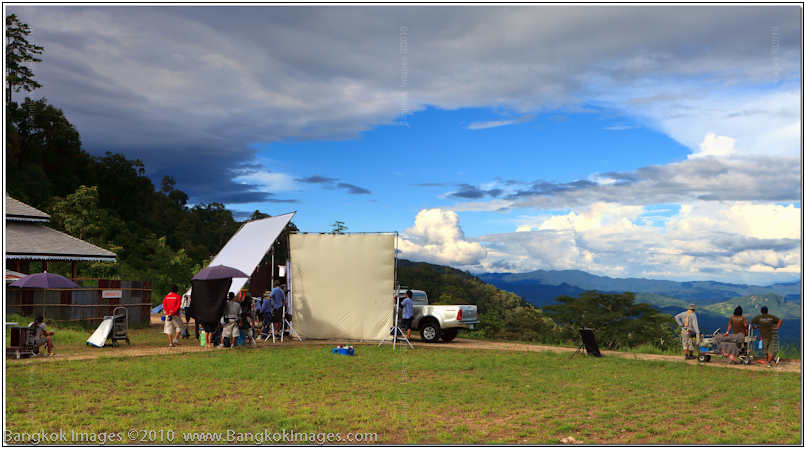
Canon 5d Mark II, 24-70mm F2.8L USM @F8 1/250th 35mm ISO 100
Such a view doesn’t go unnoticed. Here a local movie company is shooting a Thai soap opera and we stopped and watched the filming for a while.
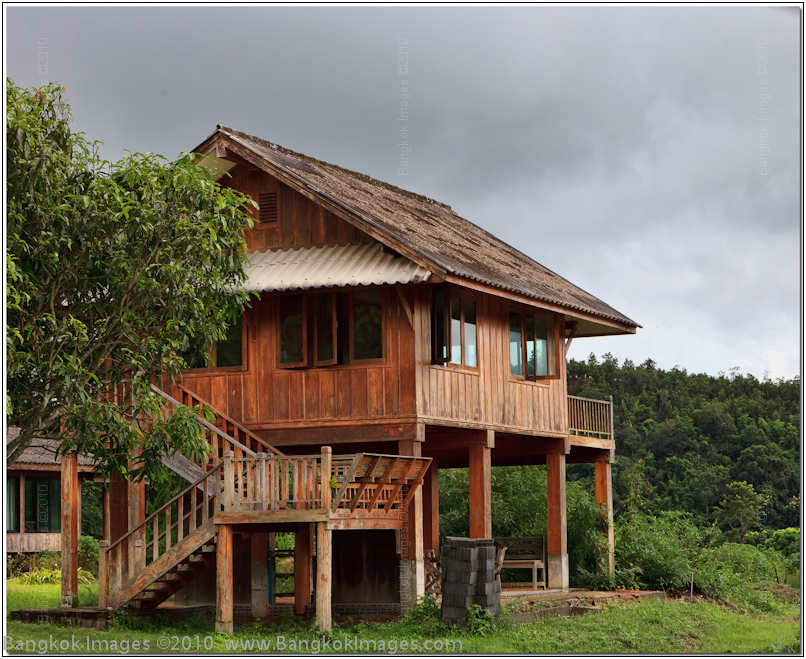
Canon 5d Mark II, 24-70mm F2.8L USM @F8 1/125th 70mm ISO 100
My friend Eyal wanted to show me this structure and I immediately knew why. It was typical, raised to keep the occupants above the occasional flood, build from wood from the local forests, and featuring a spectacular view. You can picture yourself living in such a home and standing out on the deck with a full time view of the best Thailand has to offer.
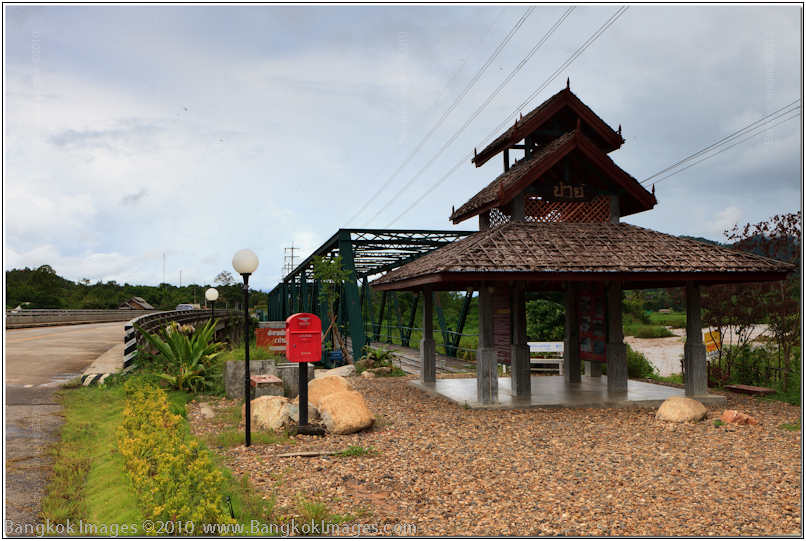
Canon 5d Mark II, 24-70mm F2.8L USM @F8 1/250th 34mm ISO 100
This is the same Ta-Pai bridge featured as a Featured Photograph here. Sometimes backing away from the main attraction and capturing the attraction as part of the bigger picture is interesting as well.
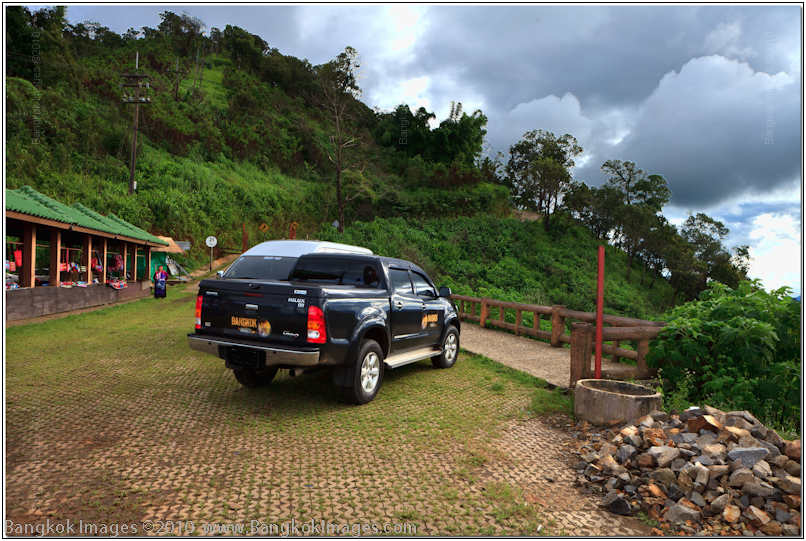
Canon 5d Mark II, 24-70mm F2.8L USM @F8 1/125th 24mm ISO 100
Across from the area where they were shooting the movie the Lisou have set up this roadside sale area featuring traditional clothes and crafts.
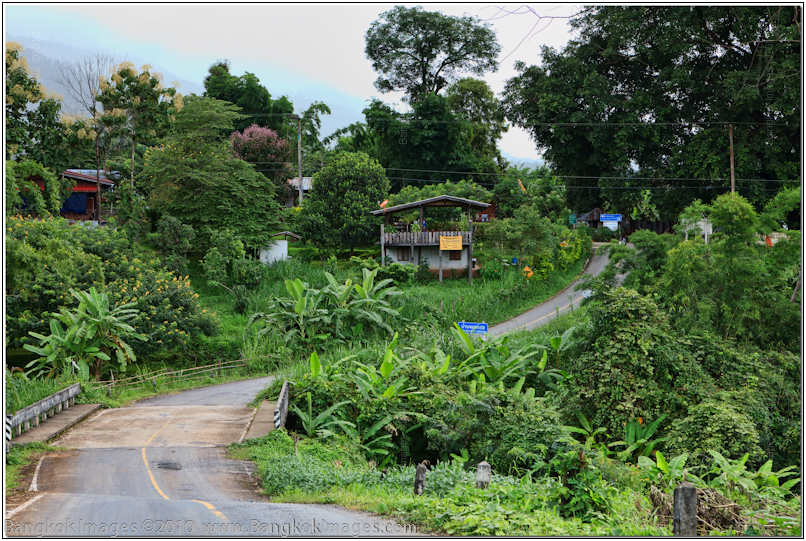
Canon 5d Mark II, 24-70mm F2.8L USM @F8 1/200th 70mm ISO 100
One of the roads leading out of Pai and into the local mountain area.
Part of my title says “Mid-Range Zoom.” I’ve written several pieces extolling the virtues of the common mid-range zoom and considering that I intentionally packed light and made the most of the three most common zooms, a wide 16-35m F2.8L USM, a mid 24-70mm F2.8L USM, and a telephoto 70-200mm F2.8L IS USM, I wanted to share with you a single feature showing just one of these lenses.
Why? It’s not about equipment nearly as much as you might imagine. Depending on your chosen genre of photography, often a single lens will serve you very well. With landscape photography it’s much more about choosing the right location, being there at the right time when the weather and light create the best presentation, and properly exposing the scene. Proper exposure is key. Whether it's street photography, landscape photography, portraits, glamor, photojournalism, a single lens will serve you well for the vast majority of your captures. A mid-range zoom is perhaps the most useful lens a photographer carries, yet it’s the most under appreciated.
These images were selected for another reason. Notice they were all shot at F8 and ISO 100? Really, the only settings which changed were the focal lengths and shutter speeds to accommodate the current light levels. You might find this boring if you’re an equipment junkie, but it should drive home that photography is about much more than your equipment.
Next time I visit the Mae Hong Son province I’ll visit with a plan and intent. I’ll pack and carry a myriad of prime lenses which excel at their individual focal lengths and the sweet spot of their aperture, and I’ll make for the most part the same images. The differences will be in the smallest details, details most of you won’t ever care about. Details that can only be seen on the largest prints of 24×30 inches and larger. Prints I’ll market and possibly include in future publications.
An “economical” bargain mid-range zoom such as those which often come as “kit” lenses will quickly reveal its limitations. A quality mid-range zoom in turn will only reveal its great utility and image quality, and will remain unmatched by all but the very best primes. When you consider how useful a high quality mid-range zoom really is, you’ll probably come to the conclusion it pays to get a good one. I use mine about 90% of the time inside my studio, for about 80% of coverage during weddings, for a walk around lens at attractions, about half the time when covering news events, and quite often it’s my go to lens for trips like this where I don’t want to carry tons of glass, but I still want a high quality lens to make great images for my efforts.
I hope you’ve enjoyed this part of the series…
Logitech K800 Cordless Illuminated Keyboard, a Review *menu

Introduction
A few months ago in the “Three Way Keyboard Shootout” I described my experiences with my old favorite the Logitech diNovo Edge and my new experiences with the Logitech diNovo Edge Notebook and Logitech Illuminated Keyboard. All three are great keyboards, but what I really wanted was features from all three of them in a single keyboard. In my summary I mentioned I’d just learned Logiteched announced their new K800 cordless illuminated keyboard which promised to incorporate all the desired features at a reasonable price of $99 USD. I put one on pre-order and waited.

Three weeks ago it was finally delivered. I’ve probably typed over 50,000 words on the new K800 since delivery and I’m impressed. It truly does incorporate the desired features and it does it well. The Logitech K800 is my new favorite keyboard and I suspect it will be for the next 2-3 years or more.
Features
Backlit Illuminated Keys
This is becoming a valuable feature for many. Many manufacturers simply have lights behind the keys so light comes up from between the keys. Logitech does this much better my laser etching the actual character in the key and having the light come up through the etching. This works great.
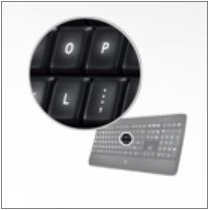
Adjustable Backlighting
There are four levels of illumination available by pressing the Function key and the F5 (down) and F6 (up) keys. The four levels are more than adequate for comfortable backlighting in every situation I’m used the keyboard in.
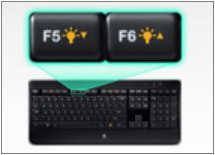
Hand Proximity Detection
Because this runs off rechargeable batteries it only makes sense to have the major power usage functions shut down when not in use. It makes even better sense to have them power up before you even touch the keyboard and that’s exactly what Hand Proximity Detection does for you. As your hand gets close the keyboard ‘senses’ your hand and turns on the backlighting and wireless.

Fast Recharging
This is a great system with one minor flaw. The keyboard uses two NIMH AA size cells which for my uses lasts between 2-3 weeks on a single charge. I don’t use the on/off switch which would make the charge last longer. The cells can be recharged by plugging in a USB cable connected to the computer and even when fully discharged, you can continue using the keyboard while it’s charging via the USB cable. The cells fully charge in 2-3 hours depending on how depleted they are. No bulky recharging stand, no inconvenient AC charging transformer, just a simple USB cable.
The flaw? I wish you could easily replace the AA NIMH cells like on myLogitech Performance MX Mouse. Instead, you need to take out a small screw and then maneuver the batteries out carefully. This is acceptable for a permanent replacement, but not nearly convenient enough for a battery rotation like I use for the mouse. This is when I recharge a handful of AA NIMH cells, put them in my desk drawer, and then replace them when needed, once a month recharging all the cells in a desktop charger. This allows a quick change of cells in seconds. Unfortunately the screw and cell retention system on the K800 prevents this.
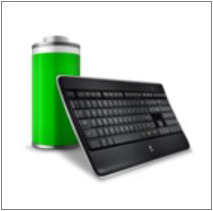
Incurve Keys
This is different than the other Logitech keyboard I’ve used. Those keys were mostly flat. The K800’s keys are perfectly curves for your fingers and the surface of the keys is the perfect combination of feel and friction. Very nice!
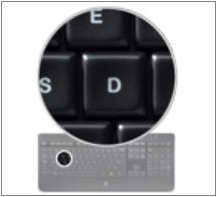
Perfect Stroke Key System
I expected this to be the same as the other three keyboards, the only three keyboards Logitech makes with the Perfect Stroke system. It’s not. They’ve improved it as well. In essence, the Perfect Stroke system evenly distributes the weight across the entire surface and provides just enough ‘over travel’ for a fluid stroke. It’s also not silent, and it doesn’t click. It seems like they’ve found the perfect combination between the two.
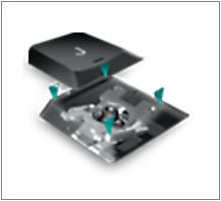
Unifying Wireless Transceiver
This is important. We never have enough USB ports, so having a single unifying transceiver capable of supporting up to 5 compatible Logitech devices is great. My Logitech Performance Mouse MX uses the same system so I didn’t even need to take the new unifying transceiver from the box. You pair the device very much the same as you do a Bluetooth device, but without codes. You get 30 feet of range. To reduce power usage, it comes with an extension cable so you can put the unifying receiver in one end and put it on your desktop close to where you use the mouse and keyboard, and then plug the other end into a USB port. The shorter distance results in roughly twice the time between battery charges. A nice touch!
I should also mention that even though this is a wireless system, your computer sees it just like a corded keyboard. When you boot up the system, you can enter the BIOS just like with a corded keyboard, without any drivers loaded. In fact, you don’t need to install any drivers to use Logitech devices unless you want to take advantage of their programmable keys and extra features. I do, so I installed Setpoint and it automatically manages both devices in the background.
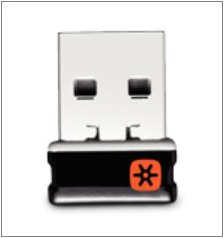
Slim Stylish Design
This might not seem like a feature but it is. The ergonomic design aids function and I wouldn’t want a more thick keyboard.
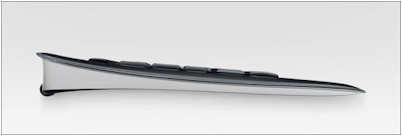
Using The Logitech K800 Illuminated Cordless Keyboard

To make this simple, it’s easily the best keyboard overall I’ve ever used. From the ergonomics, to the cordless design, the Perfect Stroke incurved backlit keys, to the programmable keys this is easily the best keyboard ever.

The key action is very fast, the fastest typist will be pleased. The key layout is the best I’ve seen, perfectly spaced and all the keys are in the right places. Setting up the wireless can be done in seconds without reading a manual as can programming the keys. The recharging system works a charm, the wireless range is great, illumination perfect, and the keyboard just plain feels and functions great.
Summary

The best keyboard I’ve used ever. It’s that good. With no cords, backlit keys, ergonomic design, perfect keystroke system, easy recharging, user friendly software, and integrated approach with my Logitech Performance Mouse MX I can’t imagine a better functioning keyboard.
Still, there’s room for improvement. I really don’t care for the clear plastic border. It flexes and feels cheap. I also don’t like the ‘edge’ being the light grey color. Black would be much better. Really, I liked the aluminum construction of the Logitech diNovo Edge much better, it felt more solid and more luxurious. Still, at half the price of the diNovo Edge I suppose a bit of plastic is to be expected. Yet, if they made an aluminum model at twice the price I’d buy it. I think your input and output devices are that important. Are you listening Logitech?
You won’t be disappointed with this keyboard. You’ll love it.
Photography News of Interest *menu
Sigma announces pricing and availability for its new 85mm F1.4 EX DG HSM lens. This might turn into a popular alternative to those wanting a nice 85mm portrait lens, but find the Nikon or Canon equivalent too expensive.

Hypnotic Metro Photography. Hmm.. that’s a new one on me. Dmitry Kharchenko takes on a personal challenge to photograph the lighting fixtures in underground transit areas and make
them interesting and succeeds! Check out the gallery.

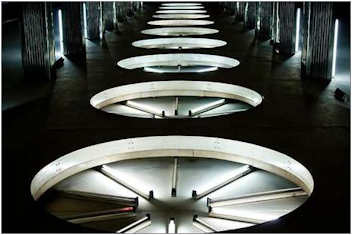
Golden Girl Photography? Roger Weber does glamor and he does it well. You’ll want to see this unusual gallery.


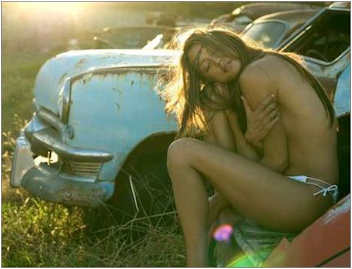
“Brunette/Blonde?” opened this month at the Paris cinematheque as they try to retrace how generations of movie makers used women's hair to seduce and shape the era. An interesting article.

Canon announces the latest firmware upgrade for the EOS 5d Mark II, version 2.0.8. This update fixes some movie mode bugs and some issues with the ST-E2 and Macro ring light. This is a relatively light update only recommended if you’re having issues with these areas.

Olympus is set to ship their new E-5 DSLR at the end of the month. You can read the press release here if you can read
Japanese.
Otherwise it just says it will ship from October 29th at a price of $1700 USD.

Readers Submissions *menu
Steve:
What a great analysis and response to my questions and comments on the NEX-5. You are a very knowledgeable and a good friend, thanks so much.
On your question on "firmware" in my camera, it has what it came with from the factory, ver.01. Version .02 is out there but it says it effects panorama sweeps etc., so I assume we are waiting for .03? I will keep an eye out for the new release but little concerned about installing it before we leave on the 13th.. I do not want to be stuck in the middle of the Caribbean with no help from Steve….
I now understand your thoughts concerning the use of the HDR feature on the camera. Use it at night with a steady grip and a non-moving subject as you did with the Pattaya pictures.
Day light pictures with even slow moving subjects could result in blurry images. In addition, I find it takes me 10-15 sec to toggle between the on and off on the HDR/DRO settings. Will also try the DRO setting to determine differences it makes in the final product.
I will experiment with the adjustments on the white balance as you suggest and review the results.
The list of articles you referred me to on DOF has given me a better understanding of how to use the camera and should make things a lot clearer for me.
I have attached a few sample pictures from the NEX-5 as requested. They just represent some of the early results from the camera with no particular theme.
Rickster








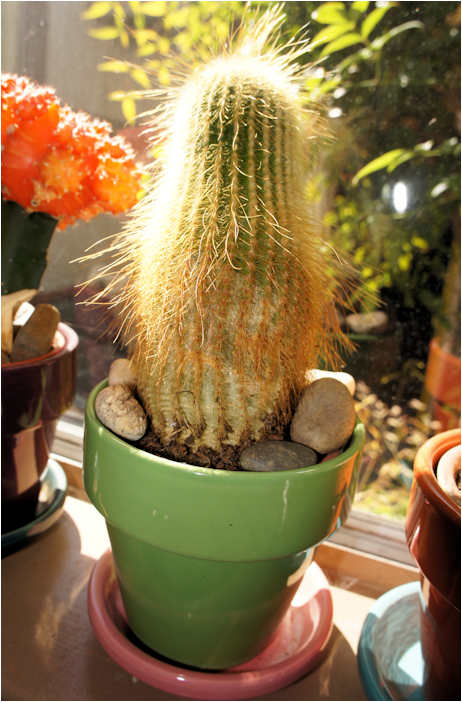
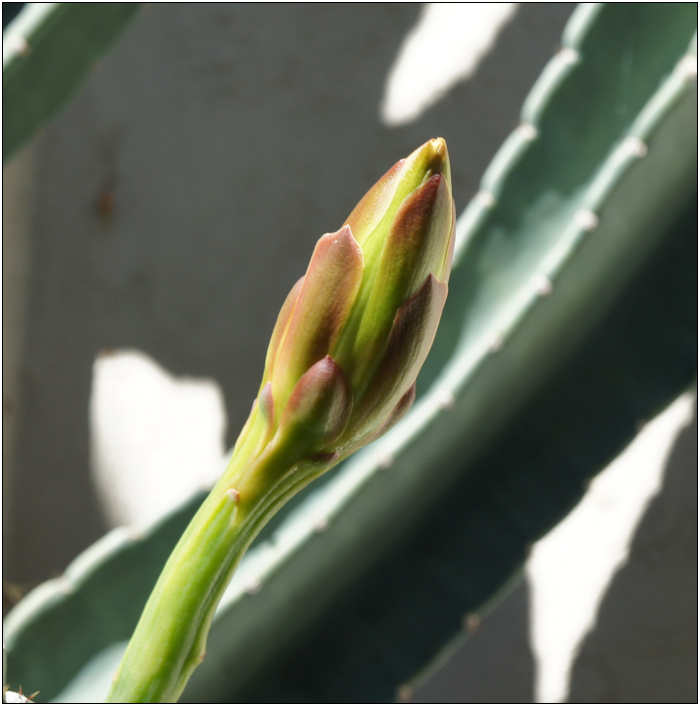
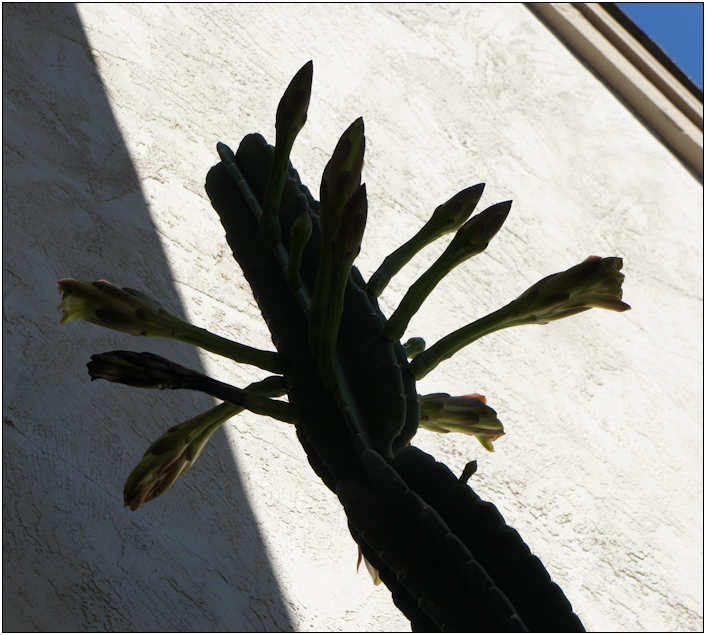
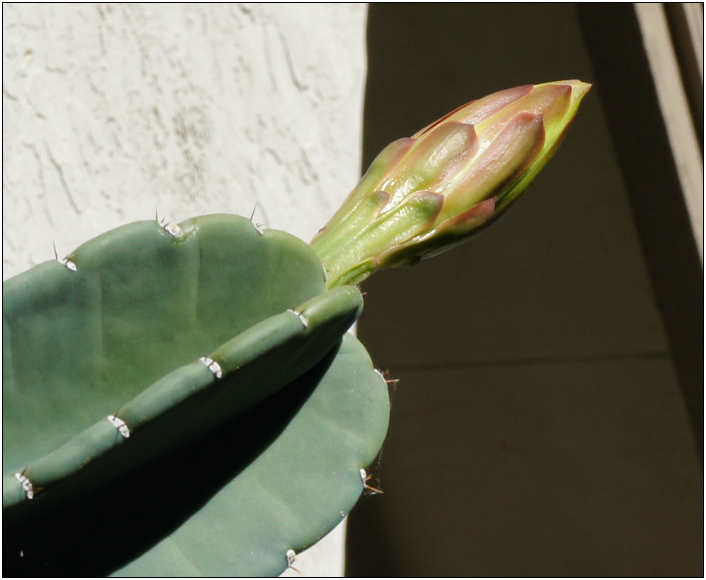
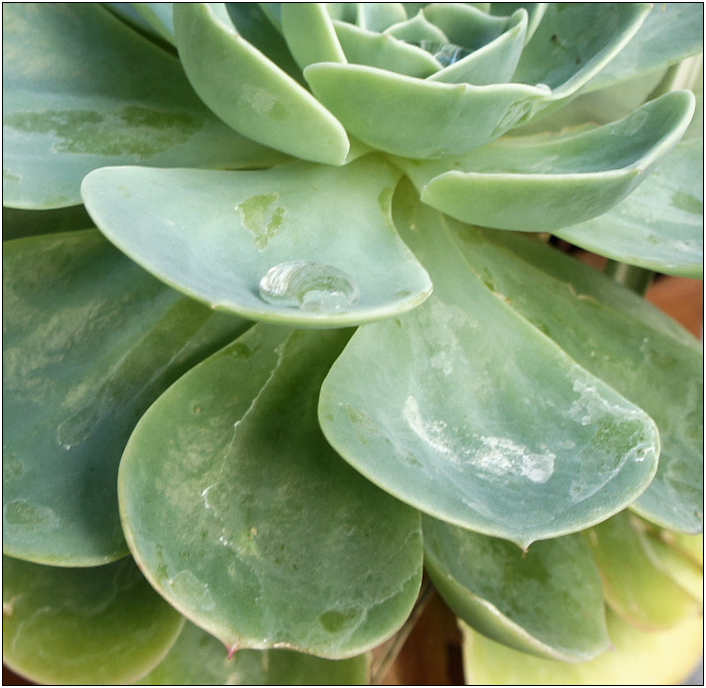
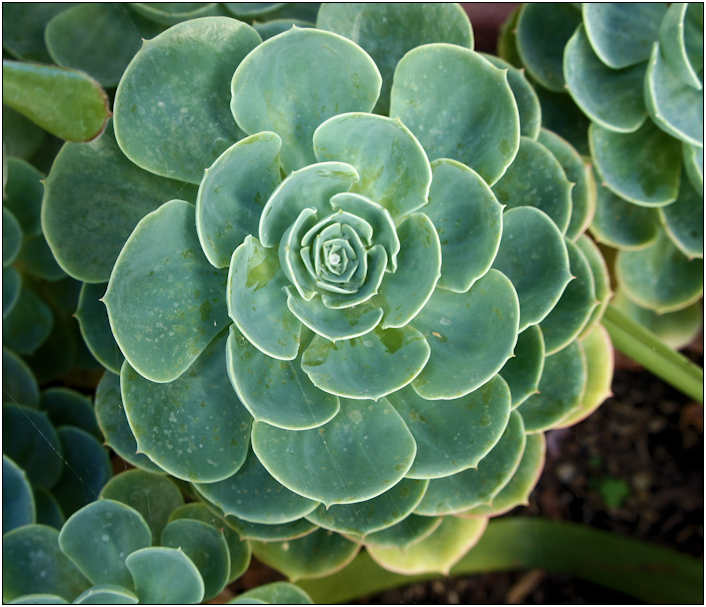
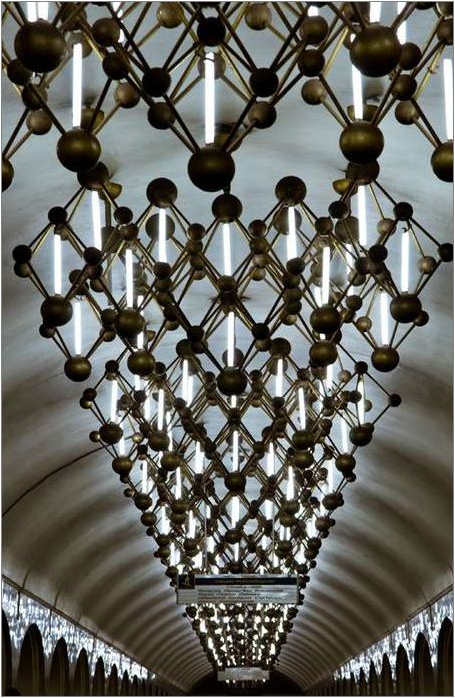
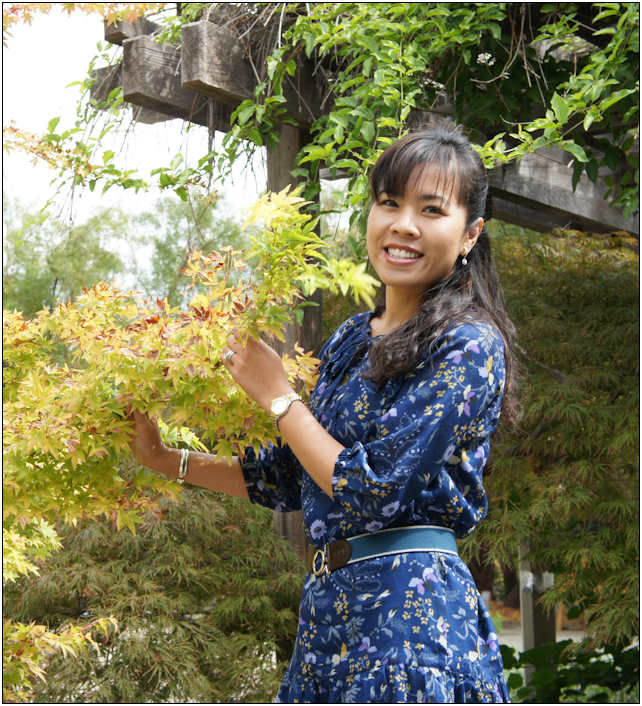
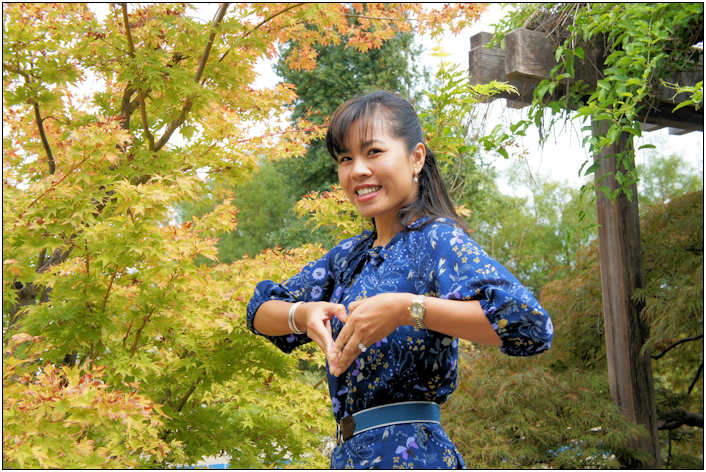
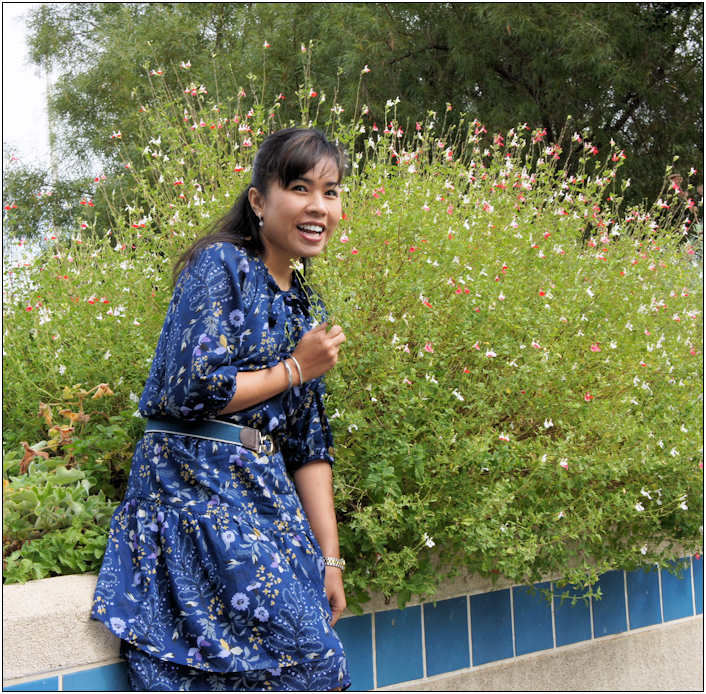
Rick –
Thanks for the sample pictures. These will help readers see what the NEX-5 is capable of.
Yes, the next firmware is V3 and it’s out now at your countries Sony support site. It’s a very significant upgrade so you’ll want to do it as soon as you have the chance.
I’m glad the articles and advice helped. I’m curious to see some more samples as you learn the camera.
Take care
Steve
I suspect the readers submissions will be a highly anticipated section of this column and I encourage anyone with photographs and travel accounts they'd like to share to please send them to me at: info@BangkokImages.com
Readers Questions *menu
This week’s question is from the forum:
Hello Steve,
I'd like to know if there are any quality keyboard with both English and Thai lettering on them available in Thailand.
Something like the Logitech Revolution or similar.
The reason being is that my wife's Thai and uses Thai script to chat with her family & friends who live in Thailand.
And I don't want to go through the hassle of having 2 keyboards, one for me and the other for her.
Charles
Charles –
This is a good question. I haven't specifically looked for Thai script on keyboards in Thailand but I have noticed certain models. For the most part keyboards that come part of complete systems sold in Thailand have both Thai and English script.. but after market keyboards sold outside a system all seem to have English only with the exception of the locally sold really cheap quality keyboards which have Thai script. I can tell you for sure Logitech products sold in Thailand do not have Thai script.
As an alternative you might want to consider an inexpensive (300-400 baht) Thai corded keyboard, and a quality cordless in English.
Btw – The Logitech K800 illuminated cordless.. is really nice.
Steve
And one more from the forum:
Hello Steve,
I have a question for you!
In Lightroom 3 when I open raw files from my Nikon D80 with the Sigma 18>125mm, I have a large range of Sigma profiles to choose from as can be seen from the first screen shot. But if I open a tif file I can only choose from a few different profiles and the one I use; being the Sigma 18>125mm is missing and the closest one that I can choose is the Sigma 18>200mm, has can be seem from the second screen shot.
Can you tell me what is going on!
Also I have noticed that there are no profiles for any Tokina lens. Do you know where I can find some? Are they available?
Charles
My Response
Hi Charles –
First, we must understand that profiles come from two places.
1. Adobe.
2. Users.
Also, we need to know that for the vast majority of users, by the time a file becomes a TIFF, we are long past the raw correction phase.
1. Adobe creates 'standard' lens profiles for lenses they support. This includes almost all of the original manufacturers lenses such as Canon or Nikon, but only a select few from other manufacturers like Sigma or Tokina. Adobe doesn't feel enough people who use these lenses uses their product to make it worth the effort.
2. Users now (since Ver 3.1) have the capability to create their own profiles and further, they have the option to share them via Adobe's profile sharing.
Since most users process in RAW it would make sense there will be substantially more profiles created for RAW use than for TIFF use.
This can be confusing because traditionally in Photoshop we process tiff files, and lens corrections have traditionally been performed on tiff files. However, once Adobe made the capability for lens correction available in ACR (Adobe Camera RAW) and Lightroom, we now have the much better option of correcting for lenses during the raw process. So that's where most are doing it now.
And.. Lightroom has never been a "tiff editor" in the same way Photoshop has. Lightroom 'can' edit tiff's and jpegs, but it's really mostly used as a RAW editor and as a cataloger for all file types. So.. no one would be applying lens corrections of tiffs because no one would capture in tiffs when there are so many reasons capturing in RAW is a better choice.
I hope this helps.
Steve
Another forum user responds:
Wouldn't you have to use the lens profiles on the original images, before processing them in HDRs? And same if you were using photomerge to make a panorama ? You would want to fix any lens distortion first, wouldn't you?
Mike N.
The OP responds:
You are correct, but this takes more time and it’s this extra time that I have very little off at the moment.
But I am working on a solution to the lens distortion issue with tif files at the moment and hopefully this will not be an issue soon.
Also I use PTGui Pro version 8.3 to make panoramas and I get great results using the raw files to make the panoramas, has this program supports raw files.
You have to understand that when I shoot a panorama set there might be up to 20 files, so if I had to edit each one before making the panorama this would take me a certain amount of time!
"Free Time" that at this point in my life I have very little off due to family and work commitments, so if I can use one program instead of 2 or 3 to do all the work for me I use that program.
My Response:
You might want to consider using the copy & paste feature of Lightroom to transfer the settings/changes you make to one image, to as many as you want. Develop/copy settings Develop/paste settings Of Sync Setting.
There are many ways to save time in Lightroom.. When you consider the image quality improvements from processing in raw over a tif or jpeg.. even lens corrections should be done in raw.
Try this: Write down in groups settings you apply to every image:
a. Sharpening
b. Clarity
c. Profile (landscape, portrait, embedded, etc)
d. Lens correction
And then settings you might want to change for a group of images taken at the same time of the same thing:
a. White balance
b. Exposure
c. Noise reduction
d. Saturation
e. Fill light (you should rarely need this one)
f. Blacks (you should rarely need this one too)
g. Vibrance (again, rarely)
h. Recovery
i. cropping
And then the settings you must change per individual image:
a. Spot healing
b. Localized editing
c. Red eye repair
d. Graduated filter
Then, adjust the first one in the first group, apply to all from the session via sync.
Then, adjust the first one in each group from the second group, apply to all via sync or copy&paste settings.
Then.. adjust each individual image.
Obviously there will be times individual adjustments from the groups above will fit into the different groups.. it depends on the shoot. But you get the idea.
Lightroom is optimized to save the professional photographer the most time possible and it does it better than anything else out there. And frankly, these methods are easy enough for anyone to learn in less than 5 minutes.
This is a good rule of thumb: Anything adjustment you make in Lightroom should be made to a raw image. Anything you need to export to Lightroom for HDR, Photoshop, Ptgui, etc, etc.. should be done via Tiffs. It's very rare (but it happens) you'd be better off doing an adjustment in Lightroom on a tiff you've already processed in another program. However, I always re-import all my completed tiff's back into Lightroom to database and distribute as needed..
Steve
The OP’s last response:
Thank you Mike_N & Steve.
I am already doing most of the things that you have listed here!
But after the image has been processed.
So last night realised that it wouldn’t take much to make a new standard profile for the Sigma 18-125mm lens that has only Lens Correction. So I had a go a few sets of Panoramas, and HDR’s and they are much better.
But when I tried the following: a. Sharpening b. Clarity c. Profile (landscape) d. Lens correction , they improved even more.
Now the only dilemma I have is to go and re-do all my Panorama's & HDR photos with this setup.
A "PAIN" but the rewards will be worth it.
This is what a HDR looks like now, the left image is the original HDR and the right image is the image is where;
- Sharpening b. Clarity c. Profile (landscape) d. Lens correction , have been added to the original raw file before being processed in the HDR program.
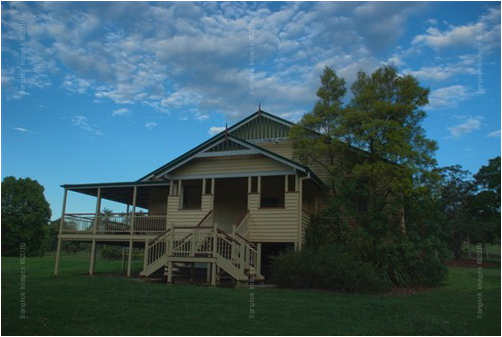
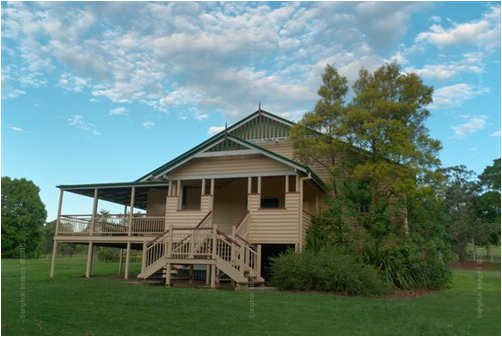
Once again thank you.
This is what Steve created these forums for!
Where ordinary people like me can talk about the problems we face in photography and get ideas on how to improve our technique or work flow.
Charles
Please submit your questions to info@BangkokImages.com All questions will be answered and most will show up in the weekly column.
A Snapshot of Bangkok Images Week in Review *menu

This week there was only one workshop, a bit of writing, and no much else. Hopefully we'll have accomplished more by next week. We've received our Garmin Nuvi 3790T GPS and Western Digital "My Passport" 1tb USB powered drive and have spend some time reviewing both. I hope to bring you both reviews soon.
The “What’s New” area of our site continues to grow in popularity and the numbers
are growing every week. The forums could use more activity, so if you want to meet other like minded photographers or just ask
a question check them out. We’ve been updating the What’s New page several times a week and provide either an interesting new image or something of interest. Check it out to keep track of Bangkok Images exploits and commentary
throughout the week.
Infocus Blog, Driving While Thai *menu
Heading north on Petchaburi I make eye contact with a 50ish Thai man driving an old Nissan out from a side soi. At the moment of eye contact he stands on the gas shooting out directly in front of my much larger truck causing me to severely brake. As I brake I watch my review mirror hoping the 15 cars behind me are paying attention and don’t rear end me. To this Thai Nissan driver it didn’t matter that he made me suddenly brake, it didn’t matter for the 15 cars behind me either. It didn’t occur to him to wait for the cars to go by and merge into traffic when there was an opening, in his mind me making eye contact with him WAS his opening. My mistake, and an example of the very essence of Driving While Thai.
A kilometer down the road a mother holding hands with 3-4 of her young kids, not one older than ten, darts out in front of 3 lanes of oncoming traffic causing myself and about 50 other cars to suddenly brake to avoid hitting her and the kids. She didn’t even look to see if she made it. She turned her back on the 50 vehicles she ran her kids out in front of, and never even looked back to see if she was close. Looking around me at my fellow motorists not a one seemed perturbed. Business as usual.
I could go on with hundreds of examples that most readers around the world wouldn’t believe. They’d think I’m making them up, or embellishing for effect, or sensationalizing. These readers have never been to Bangkok. Those of you who have been to Thailand are nodding your heads knowingly. You know such an example often happens every kilometer or less. You know that almost any trip by car will reveal 10-20 of these examples. Driving While Thai.
I’m not going to attack the Thai driver, or give you safety hints, or warn you not to drive here. Whether or not you wish to encounter such risks is a personal decision based on your driving skills, how well you can control your mental faculties, and your risk acceptance threshold. Instead, I’m going to try explaining to you why this happens:
- First and foremost is that corruption thing again. From legislating the laws, to licensing the individual, to traffic enforcement, the entire system is corrupt. It’s only been recently the insurance industry and land transportation office has ‘attempted’ to keep track of offenders and they’re still in their infancy. They’ll probably stay in their infancy because of corruption.
- Next is the Thai mindset, or maybe that myth that the Thai people are gentle in spirit, not easily angered, and are very understanding. That is, until you insult their football team, find yourself outnumbered 100-1, they lose face, money is at issue, or of course if you put them behind the wheel of an automobile. Then all bets are off and you’re dealing with a deadly combination of an uneducated and irrational angry and very aggressive driver.
- Then you have the education factor. Put a relatively uneducated person behind the wheel of a two ton hunk of steel and you really can’t expect them to be fully aware of how long it takes to stop the vehicle, how rain causes hydroplaning, the importance of vehicle maintenance, or any of the subjects you’ll see broadcast as a public service announcement in your own country. Subjects like drinking while driving, wearing a seatbelt, child safety seats, or overloading are unknowns.
- How about the Thai national sport of getting drunk? Not only is drinking a family activity everyone engages in, but it’s such a popular pastime an actual and forgivable excuse in court is “he didn’t know what he was doing (when he pulled the trigger, drove the car, chopped up the wife, or stabbed someone to death) because he was drunk..” Seriously. Read the news and you’ll see this ‘defense’ being offered to the courts over and over again. And for good reason, it works. Being blind drunk on rotgut whiskey is a suitable excuse for any heinous crime you can imagine.
- Car maintenance and repairs cost money. As long as a Thai sees their car as ‘brand new’ or still an investment, they’ll take reasonable care of it. Beyond that they’ll put the cheapest tires, postpone brake jobs even when the screech of metal on metal is hurting their already deaf ears, forego adequate insurance, or anything that costs them a single baht no matter how unsafe the car might be. But how can you blame them, this is the way the government takes care of their streets, their sidewalks, their schools, their homes, and their workplace. Money before safety. It’s a national mindset.
- A few years ago I did some research for an article I was writing and learned the average payout for a death in the workplace averaged baht 10,000. Yes, baht 10,000 is the average price paid out for the death of a construction worker or other blue collar worker in Thailand. The courts have set the value of life so cheaply, that it almost always pays to postpone that new set of tires for the big dump truck or passenger bus, to postpone the needed brake job for the big rig, or even the annual hydraulic inspection for the crane. It pays to gamble with human life and pay out the occasional baht 10,000 death gratuity, rather than do the recommended and required maintenance on a 30 ton truck.
- And let’s not forget we share the road with all sorts of unlicensed, uninsured, and unsafe vehicles such as whatever a child’s mind and a box of crayons can imagine hooked up to the side, in front of, or even behind a motorsai. Yep, attach 500 kilos of extra sidecar and load, and a thought is never given to the chassis, suspension, or braking capabilities originally designed to accommodate the 150 kilo motorsai and driver.
- We can’t discuss this subject without raising the issue of Thailand not having a single certified (or even a fake) trauma center, no Life Flights, or even an adequate public paramedic program. The best we have is the ‘hope’, one of the small privately owned and self-trained pickup trucks with emergency lights and a Watson first aid kit is in the area, and finds enough money or jewelry on your unconscious person so he finds it in his heart to throw you in the back of the pickup and take you to the closest poorly ran public hospital where any doctor with seniority or experience has surely taken the day to go golfing, went home early, and of course left instructions not to be bothered at home during the evenings/nights/weekends when most serious traffic accidents occur.
- While we’re on the subject we can’t get by without mentioning we must share the road with hundreds of thousands of motorsais cutting through traffic, pulling in front of you and then braking, knocking off your mirror, or slowing traffic to a crawl because they can’t match the acceleration of most cars. Or that many of them are driven by unlicensed and uninsured children. I wanted to use “teenagers” instead of “children”, but that wouldn’t be true. Actual children, kids under the age of 12, are routinely out there sharing the road with you. It’s hard to fathom their parents actually provide the children with these motorsais, but they do. After all, the laws aren’t enforced and if they are enforced for whatever reason, it won’t be a real ticket or fine. It will be 100 baht to the smiling man in brown. And hey, they might win the lottery if a rich Thai or better yet a farang hits their child and kills them. I kid you not.
- Okay, some of you are going to say “don’t forget about the elephants!” True. I’ll never forget the time my then UN employed Chinese/Malay girlfriend almost ran her Volvo right up the backside of an elephant in a dark soi and all she got for her great braking technique was a hood full of dung. With all the soi dogs, chickens, donkey’s, and other livestock on the road with us an elephant or two shouldn’t surprise you right?
- And of course the actual roads, stop lights, turnout lanes, flyovers, roundabouts, or a sort of standing joke among those from other countries who know better. To be fair the road surfaces are most often quite good. But traffic management of any type is almost always contributing to unsafe conditions. The “fast lane” on Thai highways are asinine. This is where all the slow big trucks, slow little trucks, motorsais with 4-5 passengers, and unlicensed vehicles of all types must pass through to turn right or make a U-turn. They’re also where I’ve seen (many times) construction crews park tractors, leave loads of streetlights or road construction materials, or even park a long row of trucks. And of course the cones (if any) won’t extend further than 20 meters from these hazards and there will be no warning lights after dark. For a car traveling the legal 120kmph 20 meters of warning is more of a death notice than a warning.
- And finally, let us not forget that most Thai drivers are that families first generation of driver. This means they didn’t ride in the car with their parents as a child, or a teen, so they have no idea how hard pedestrians are to see out there in the dark while it’s raining, especially if they’re wearing black. All they know is how easy it is to see a car with big bright lights as a pedestrian, and they never stop to think how hard it is for the car to see them. If they’d ridden in a family car as a child, as most of us in the west have, then they’d be much more aware of how well they can be seen when they’re running out in front of a car, in the dark, in the rain, while wearing black.
I really don’t think I’ve been unfair, not even a little. If anything I haven’t been descriptive or accurate enough or called out the dangers as well as I should have. Driving While Thai. With all the fatal accidents it’s a
temporary condition I’m sure.
I’ve been driving now for 36 years. In America, Europe, Japan, Korea, Taiwan, Malaysia, Cambodia, Laos, Burma, and many other countries. Believe me when I say that Thailand is just modern enough to ensure high rates of speed, and backwards enough
to ensure the most dangerous driving conditions I’ve ever experienced. A perfect storm.
It’s not even a matter of deciding if you’ll use the public roads or not, you must to get anywhere or do anything. It becomes a matter of the decisions, if owning, maintaining, and driving your own car puts you in a better position than
letting Somchai drive. Your mileage may vary. Driving While Thai..
Until next time…




